What Is SSPM (SaaS Security Posture Management)? Features and Best Practices
SaaS Security Posture Management (SSPM) solutions offer tools and automation capabilities that can provide visibility into the security posture of SaaS environments, and make it easier to remediate security concerns in those environments.
SSPM solutions may cover some or all of the following aspects of SaaS security:
- Security controls—reviewing controls implemented by the organization for the purpose of protecting SaaS applications against external and internal cyberattacks.
- Security management—providing tools and techniques to help establish, update, optimize, and apply security policies.
- Detection and response—detecting threats, mitigating incidents, and recovering from cyber attacks.
This is part of an extensive series of guides about cloud security.
What is SaaS Security Posture?
SaaS security practices and tools help organizations secure corporate data and user privacy in subscription-based cloud applications. SaaS applications often hold a large amount of sensitive information. These applications allow many users to gain access to information from a wide range of devices and locations. This can introduce major privacy and security risks.
While security and IT teams are generally familiar with tools and practices designed to protect Infrastructure as a Service (IaaS) and Platform as a Service (PaaS) environments, SaaS security requires a different approach.
SaaS applications serve different teams with varying degrees of technical expertise. Additionally, the majority of organizations use multiple SaaS applications, each with a different security structure and different levels of complexity. This can turn SaaS security into a complex and time consuming effort.
How Does SSPM Work?
SSPM works by continuously monitoring, assessing, and improving the security configurations and controls of SaaS applications. Here are the key components of its operation:
- Discovery and inventory management: SSPM tools identify all SaaS applications in use across the organization, including unauthorized or “shadow IT” applications. They provide a centralized inventory, ensuring visibility into the entire SaaS ecosystem.
- Configuration analysis: These tools analyze security configurations within each SaaS application. They check for misconfigurations, such as excessive user permissions, weak password policies, or disabled multi-factor authentication (MFA). By comparing configurations to industry best practices or compliance requirements, SSPM ensures that SaaS environments are aligned with organizational security standards.
- Continuous monitoring: SSPM solutions perform real-time or scheduled monitoring to detect changes in application settings, user behavior, or data access patterns that may introduce risks. For example, they might flag unusual login activity or a sudden change in permission levels for critical data.
- Risk assessment and prioritization: Based on monitoring and analysis, SSPM tools provide risk scores or assessments for SaaS applications. They help security teams prioritize remediation efforts by highlighting the most critical vulnerabilities or compliance gaps.
- Automated remediation and recommendations: Many SSPM platforms offer automated workflows to address identified issues, such as revoking unnecessary user permissions or enabling disabled security settings. For risks that require manual intervention, they provide actionable recommendations to guide remediation.
- Compliance management: SSPM tools help organizations maintain compliance with regulations like GDPR, HIPAA, and SOC 2. They map security settings and practices to compliance frameworks, generating reports to demonstrate adherence to auditors or stakeholders.
By automating these processes, SSPM reduces the burden on IT and security teams, while ensuring that SaaS applications remain secure and compliant in dynamic cloud environments.
Why Do Organizations Need SSPM? Key Benefits
Many critical business systems are being migrated to SaaS. According to a Gartner report, worldwide spending on SaaS is as much as 48% higher than the spend on infrastructure as a service (IaaS) and 106% higher than platform as a service (PaaS). Many organizations rely on a similar set of popular, strategic SaaS applications to implement common business functions.
SSPM can address the following problems in an organization, by continuously assessing security risks and managing the security for SaaS applications:
- Complex configurations—modern SaaS applications have hundreds of configurations that control sensitive activities, such as the ability to share files via Google’s G Suite, access customer data in Salesforce, or record video calls in Zoom. Relying on default settings is not a viable solution.
- Multiple applications—different SaaS applications, especially if provided by different vendors, have their own set of configurations and interpret common controls such as IAM and data sharing in their distinct way. IT and security teams need to understand what each application offers and how configuration settings affect the security posture.
- Multiple interfaces—configurations are typically contained in multi-layer menus in each application console. Security and IT operations teams must be familiar with the security features in each application, and be able to find them in the application configuration. In some cases, simple operations like adding or removing permission for multiple users can be inefficient and time consuming.
- Configuration drift—it is not sufficient to set a secure configuration once. To ensure there are no misconfigurations, administrators should periodically check each application and identify if there were deviations from secure configuration.
SSPM Features and Capabilities
Here are several key features every SSPM solution should provide:
- 24/7 monitoring—continuously monitoring and enforcing security and privacy policies for SaaS applications.
- Application support—enabling quick integration with the SaaS ecosystem of the organization, including video conferencing platforms, HR management systems, customer support tools, workspaces, dashboards, content, file-sharing applications, marketing platforms, messaging applications, and all integrated applications. The SSPM solutions should be able to detect misconfigurations or incorrect roles and privileges in any of these applications.
- Remediation—supports remediation efforts, either automatically or manually via support from the SSPM vendor. SSPM solutions that provide active remediation can improve your ability to rapidly respond to security risks.
- Built-in security benchmarks—continuously running security checks according to industry benchmarks and industry standards, and determining insecure configurations or those that represent a compliance violation. SSPM solutions should also be able to tailor security and compliance checks to the specific needs of the organization.
- Single pane of glass—displaying all security risks across all applications on one, user-friendly dashboard. All stakeholders, including application users, IT and security staff, should be able to understand security risks, and receive actionable information to remediate them.
Key Use Cases for SSPM
Securing Data Sharing in Collaborative SaaS Tools
Collaboration tools like Microsoft Teams, Slack, or Google Workspace are integral to business operations but often involve significant data sharing. SSPM tools help monitor and secure shared files, channels, and workspaces. They can detect when sensitive files are shared externally or when private channels are made publicly accessible.
For instance, an SSPM solution might notify a security team if a file containing confidential financial data is shared with users outside the organization, and provide an automated option to revoke access immediately.
Monitoring and Mitigating Insider Threats
Insider threats—whether intentional or accidental—can be challenging to detect in SaaS environments. SSPM tools analyze user behavior to identify unusual patterns, such as excessive data downloads, access to restricted areas, or attempts to bypass security settings.
SSPM solutions can also flag anomalies like a dormant user account suddenly becoming active or an employee attempting to export sensitive data shortly before leaving the organization. With real-time alerts and remediation workflows, SSPM enables security teams to quickly mitigate these threats.
Managing Third-Party App Integrations
Third-party applications that integrate with SaaS platforms like Salesforce, Slack, or Office 365 can enhance productivity but may also introduce security risks. These risks arise when integrations have excessive permissions or when dormant apps retain access to critical data.
SSPM tools monitor and evaluate all third-party app integrations, analyzing their permissions and identifying those that access sensitive data unnecessarily. They can recommend deactivating or restricting access for unused or high-risk integrations. For example, an SSPM might highlight an outdated plugin in a project management tool that has administrator-level permissions, prompting security teams to take immediate action.
Ensuring Least Privilege access
Granting users more permissions than they require creates unnecessary risk in SaaS environments. SSPM solutions ensure organizations enforce the principle of least privilege by continuously auditing user roles and permissions.
For instance, SSPM tools can identify users with administrative privileges in platforms like Salesforce or Zoom who do not need such access, or detect dormant accounts that still have active permissions. They can recommend revoking or modifying excessive permissions and provide automated workflows to streamline the process. By minimizing access to sensitive systems and data, SSPM solutions reduce the likelihood of insider threats, account compromise, and unauthorized data access.
Identifying and Mitigating Shadow IT Risks
Organizations often face risks from “shadow IT”—SaaS applications used without approval or oversight by the IT department. These unauthorized tools can bypass security policies and expose sensitive data. SSPM solutions provide visibility into all SaaS applications in use, including shadow IT.
By detecting unsanctioned apps, SSPM helps security teams evaluate their risk, enforce usage policies, and block or manage unauthorized applications. For example, an SSPM tool might flag a team using a free, unapproved file-sharing app to share internal documents, enabling the organization to mitigate potential data leaks.
Tips From Expert
In my experience, here are tips that can help you optimize the implementation of a SaaS Security Posture Management (SSPM) solution:
- Prioritize app-specific configuration hardening
Each SaaS platform has unique security settings. Focus on understanding and hardening the critical configurations of your most sensitive SaaS applications (e.g., Salesforce, Office 365) to prevent misconfigurations that can lead to breaches. - Leverage SSPM to manage third-party integrations
Ensure your SSPM solution monitors third-party apps that integrate with your SaaS platforms. These integrations can introduce vulnerabilities, and continuous assessment of their security posture is essential to prevent data leakage or abuse. - Automate periodic compliance audits
Set up automated checks for compliance frameworks (e.g., GDPR, HIPAA) within your SSPM. Regularly validate that SaaS configurations and user permissions align with regulatory requirements, helping avoid costly penalties. - Set up configuration drift detection
Leverage SSPM to detect configuration drift—when settings change from a secure baseline unintentionally. Immediate detection helps ensure security standards are maintained, especially when SaaS vendors introduce updates that reset configurations. - Ensure real-time risk scoring for rapid response
Choose an SSPM solution that offers real-time risk scoring for SaaS environments. This allows your security team to prioritize remediation efforts based on the most severe risks, helping focus resources on the most critical vulnerabilities.
SSPM vs. Other Solutions
CSPM vs. SSPM
CSPM, or Cloud Security Posture Management, is a cybersecurity solution that focuses on securing cloud environments. Like SSPM, it provides continuous monitoring and risk assessment. However, while SSPM focuses specifically on SaaS applications, CSPM takes a broader view, encompassing all types of cloud services including IaaS (Infrastructure as a Service) and PaaS (Platform as a Service).
While CSPM can provide valuable insights into your overall cloud security posture, it may not offer the same level of granularity as SSPM when it comes to SaaS applications. For businesses that heavily rely on SaaS, an SSPM solution may be the better choice.
On the other hand, if your business uses a mix of cloud services, a CSPM solution can provide a more comprehensive overview of your cloud security posture.
CASB vs. SSPM
CASB, or Cloud Access Security Broker, is another important player in the cybersecurity landscape. Unlike SSPM and CSPM, which focus on monitoring and risk assessment, CASB is all about control. It acts as a gatekeeper, controlling access to cloud services and enforcing security policies.
While CASB can provide robust access control and policy enforcement, it may not offer the same level of visibility as SSPM. That’s because CASB focuses on the point of access, whereas SSPM monitors user activities within the SaaS environment.
If access control and policy enforcement are your primary concerns, a CASB solution may be the way to go. However, if you need deep visibility into user behaviors and potential vulnerabilities within your SaaS applications, an SSPM solution could be the better fit.
SSPM vs SIEM
SIEM, or Security Information and Event Management, is a cybersecurity solution that collects and analyzes security-related data from various sources. It’s essentially a centralized hub for security data, providing a holistic view of your security posture.
While SIEM can provide a wealth of information, it may not offer the same level of SaaS-specific insights as SSPM. That’s because SIEM is designed to analyze data from a wide range of sources, not just SaaS applications.
In addition, SIEM solutions can be complex and resource-intensive, requiring specialized skills to manage effectively. SSPM, on the other hand, is designed to be easier to use and deploy, even for users without security expertise.
If you’re looking for a comprehensive security data analysis tool, a SIEM solution may be the right choice. However, if your primary concern is securing your SaaS applications, prefer an SSPM solution.
SaaS Security Best Practices
Here are several important best practices that all SaaS customers must practice. Many of them can be implemented or made easier by the use of SSPM solutions:
Encrypt Cloud Data
Encryption converts data into unreadable text that can only be deciphered using a decryption key. This ensures that even if data is intercepted or accessed unauthorizedly, it cannot be read or exploited.
Cloud data encryption should be applied to both data in transit and data at rest. This means that data should be encrypted as it moves between devices and networks and also when it’s stored in the cloud. Most SaaS providers offer built-in encryption services, but in some cases you might choose to rely on third-party encryption tools which provide better security or support specific organizational requirements.
Closely Monitor Data Sharing
Data sharing is a common feature in SaaS applications, allowing for collaboration and efficiency in business operations. However, it also presents a significant security risk. Unauthorized or careless data sharing can lead to data breaches and loss of sensitive information.
To mitigate this risk, it’s essential to closely monitor data sharing activities in your SaaS applications. This involves setting up policies that govern how data should be shared and who it can be shared with. It also involves monitoring data transactions to identify any suspicious activities or breaches of policy.
Track Shadow IT
Shadow IT refers to the use of IT systems, devices, software, services, and solutions without explicit organizational approval. It poses a significant security risk as it often bypasses the organization’s security controls and policies.
In the context of SaaS applications, shadow IT involves the use of unapproved apps, platforms, or platform features. To mitigate shadow IT, identify and catalog all IT assets, including hardware, software, and SaaS applications. Monitor network traffic to identify any unauthorized activities or anomalies. Once shadow IT is identified, it should be either integrated into the organization’s IT framework or removed to eliminate the security risk.
Employ Identity and Access Management (IAM) Solutions
IAM is a system that manages who has access to what resources in an organization. It ensures that the right individuals have the right access to the right resources at the right times.
In the context of SaaS applications, IAM solutions help manage user identities and their access to various applications. This includes setting up user roles, managing user credentials, enforcing access policies, and monitoring user activities. IAM solutions can also help detect and prevent unauthorized access or activities, thereby enhancing the overall security posture.
Complement SSPM with a Data Loss Prevention (DLP) System
A DLP system is designed to prevent data breaches by monitoring, detecting, and blocking sensitive data while it’s in use, in motion, and at rest.
In the context of SaaS applications, a DLP system can identify sensitive data stored in the cloud and ensure it is adequately protected. This involves setting up policies that define what constitutes sensitive data, who can access it, and what they can do with it. The DLP system should also be able to monitor data transactions and prevent unauthorized access or activities.
Considerations for Selecting a SSPM Solution
Here are the key considerations to select the right SSPM solution for your organization.
- Application integrations: A good SSPM solution should seamlessly integrate with all SaaS applications used in your organization. Prepare an inventory of SaaS applications currently used by your organization, and make sure the SSPM solution supports all of them with full coverage of the relevant features and editions.
- Comprehensive security inspections: An effective SSPM solution should be capable of identifying a wide range of security issues, from misconfigurations and vulnerabilities to potential compliance risks.
- Remediation: The solution should provide automated remediation for common issues or detailed guidance for manual remediation of complex issues.
- Device posture management: The SSPM solution should provide visibility into the security posture of each device used to access your SaaS applications, identifying security risks like outdated software or missing security patches.
Cynet SaaS Security Posture Management
Cynet 360 AutoXDR automatically identifies, prioritizes and fixes security risks across leading SaaS applications. Using a simple dashboard, security administrators can immediately identify and prioritize SaaS security posture issues. For each SaaS environment, you can quickly view the types of risk identified, the severity of each, and details about each misconfiguration, including the related compliance standards. Historical views allow administrators to identify and analyze persistent areas of concern to help avoid future compliance violations.
See Additional Guides on Key Cloud Security Topics
Together with our content partners, we have authored in-depth guides on several other topics that can also be useful as you explore the world of cloud security.
What is MDR
Authored by Cynet
- [Guide] What Is Managed Detection and Response? (MDR)
- [Guide] MDR Services: Choosing the Best Option for You
- [Guide] EDR vs MDR: How They Compare and the XDR Connection
- [Product] Cynet 24×7 Security Center | Managed Detection and Response (MDR)
CNAPP
Authored by Tigera
- What Is CNAPP (Cloud-Native Application Protection Platform)?
- What Is a Cloud Workload Protection Platform (CWPP)?
Azure Kubernetes Service
Authored by Spot
Related Posts
Looking for a powerful, cost effective XDR solution?
- Full-Featured XDR, EDR, and NGAV
- Anti-Ransomware & Threat Hunting
- 24×7 Managed Detection and Response



